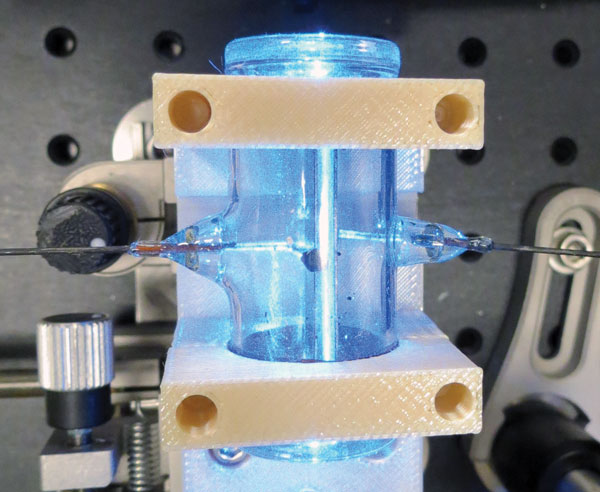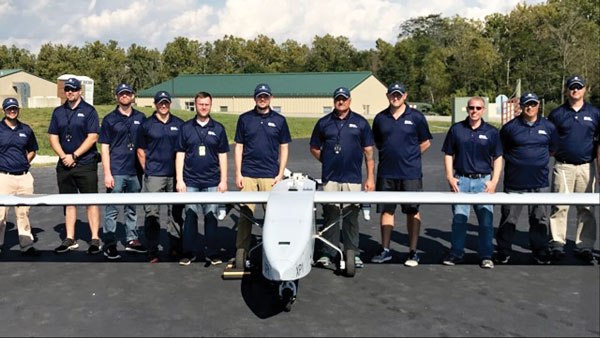
Intermediate range flight experiment succeeds
Sandia, on behalf of the DoD and U.S. Navy strategic systems programs, successfully conducted an Intermediate Range Conventional Prompt Strike Flight Experiment-1 test from its Kauai Test Facility in Hawaii on Oct. 30, 2017. The Sandia team served as the lead technical integrator, provided the majority of hardware and software and integrated the entire flight system. The flight test collected data on hypersonic boost-glide technologies that will anchor ground testing, modeling and simulation of future conventional prompt strike concepts. (1000, 2000, 5000, 10000)

Successful rocket test supports science, stockpile stewardship
Sandia successfully launched a research rocket in May, from its Kauai Test Facility in Hawaii, that carried multiple experiments designed to deepen scientific understanding and support the stewardship of the U.S. nuclear weapons stockpile. The High Operational Tempo sounding rocket flight test program seeks to provide an agile technology testing platform to validate modeling and simulation assumptions and perform other non-nuclear, non-explosive research. NNSA plans to continue sounding rocket launches to advance modernization and life extension programs. (1000, 2000, 5000, 8000, 10000)
Required overseas training offered in-house
Due to changes from the U.S. Department of State, members of Sandia’s workforce are now required to take High Threat Security Overseas Seminar training prior to international work travel to any country outside the United States, not just high-risk countries. Through the efforts of the international security operations team, Sandia is now the only national lab to offer the training in-house. The web-based course is available free of charge, saving time and money while supporting critical mission work.
Deployed security professionals support mission
Sandia’s safeguards and security organization expanded its integrated support team that places security professionals in high-risk mission areas. Embedded and deployed security professionals who support projects such as B61-12 and W80-4 programs are identifying potential risks and implementing protection strategies into daily work processes. In addition, classification technical reviewers are developing critical classification guidance and providing consistent derivative classification support. These programs integrate security professionals into mission work, allowing Sandia strategically to mitigate some top security concerns.

Most sensitive detection of weak electric fields achieved
Sandia achieved the most sensitive known detection of weak electric fields (E-fields) by exploiting the change in atomic Rydberg states in an atomic vapor, demonstrating an E-field sensitivity of less than 1 mV/(m·Hz1/2) over frequencies ranging from DC to 10 kHz. In comparison, E-field sensing methods based on transistors and electro-optic materials have shown, at best, E-field sensitivity of a few mV/(m·Hz1/2) for similar frequency range of detection. The Laboratory Directed Research and Development effort is enabling the realization of ultrasensitive atomic electrometry for dual-use applications. (5000, LDRD)

Multi-mission payload passes milestone
In September, Sandia’s advanced RF systems team, in partnership with threat intelligence and systems mission engineering, successfully passed its Phase III “live environment” milestone for the Labs’ newest multi-mission payload. The distributed system performed without issue and accomplished all tasked missions while logging 135+ operational flight hours. This included successfully executing a detection algorithm developed by U.S. Air Force Research Laboratory for its system, onboard the Sandia platform. The military exercise culminated with several successful live demonstrations to a large stakeholder audience, including the vice chairman of the Joint Chiefs of Staff. (5000)

U.S. Secret Service relies on Sandia at State of the Union
The U.S. Secret Service requested that Sandia provide onsite and remote cyber analysts to support monitoring and protection during the State of the Union event. Sandia was one of only two agencies tasked with supporting the event. The Sandia-developed tool Tamizar has become the primary network forensics tool for the USSS’s Critical Systems Protection unit. The USSS relies on Sandia capabilities and expertise as part of a long-standing and successful partnership. (5000)
SCEPTRE provides training environment for major U.S. cyber exercise
Sandia’s SCEPTRE team participated in CYBERFLAG 18-1, the U.S. Cyber Command’s largest annual cyber exercise, from June 13-30. CYBERFLAG is an interagency, reserve forces and combined military exercise focused on the defense of critical U.S. infrastructure key resources and the DoD information network. Sandia’s SCEPTRE team delivered the most comprehensive and robust training environment ever fielded. Sandia’s knowledge, expertise and unique capabilities in industrial control systems/supervisory control and data acquisition modeling and simulation was reflected in compliments and comments by CYBERFLAG leadership. (5000)